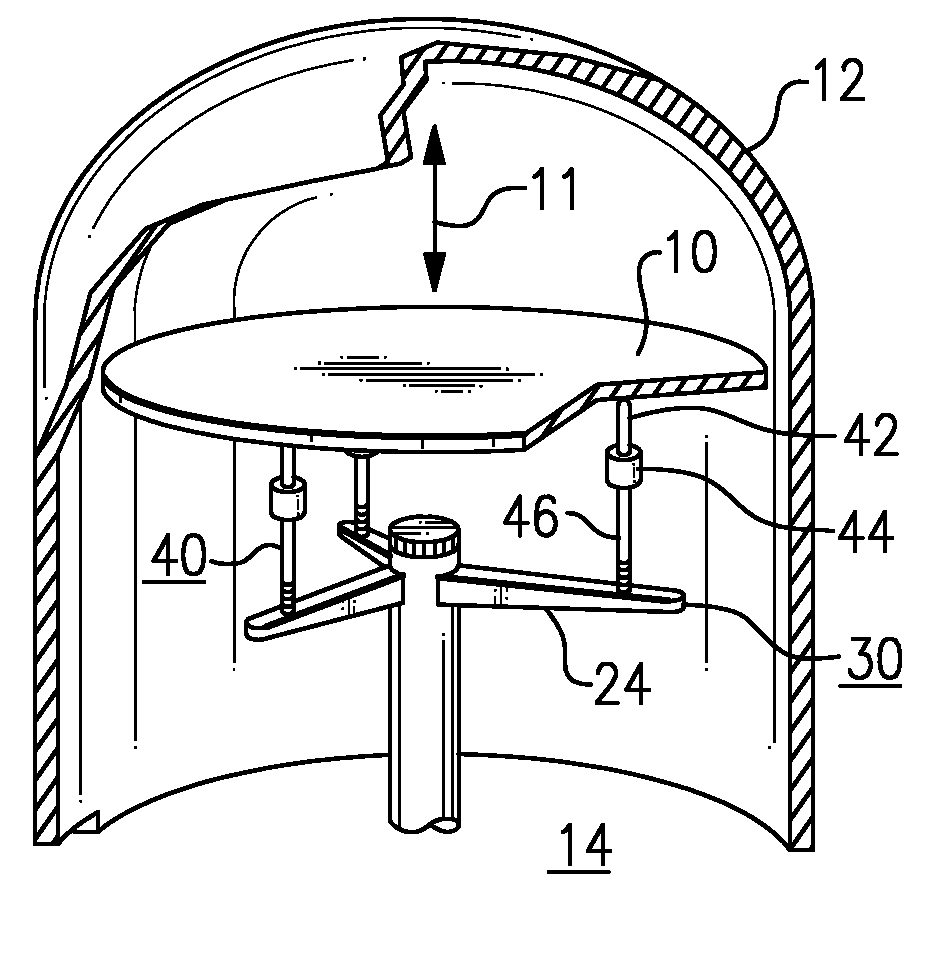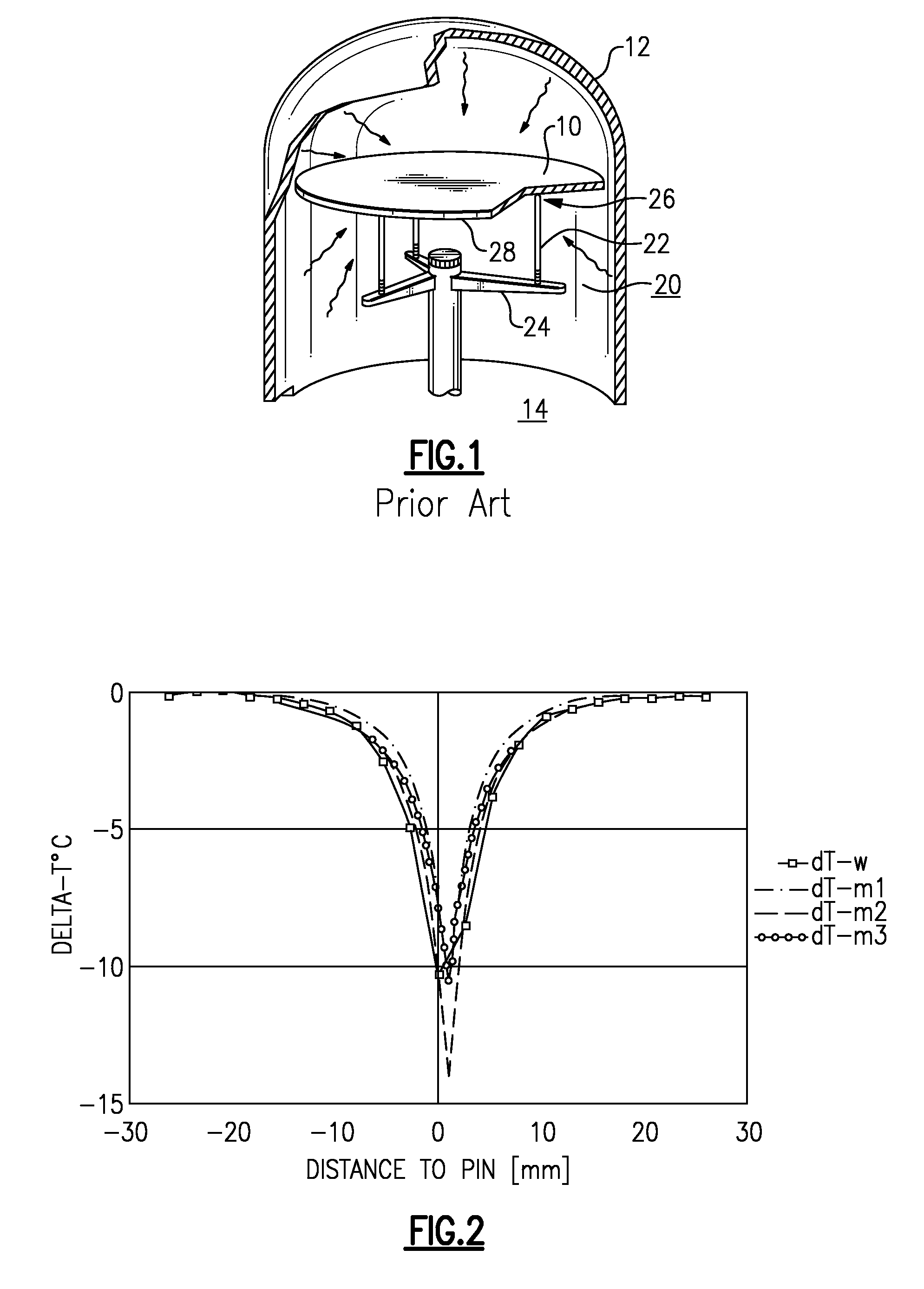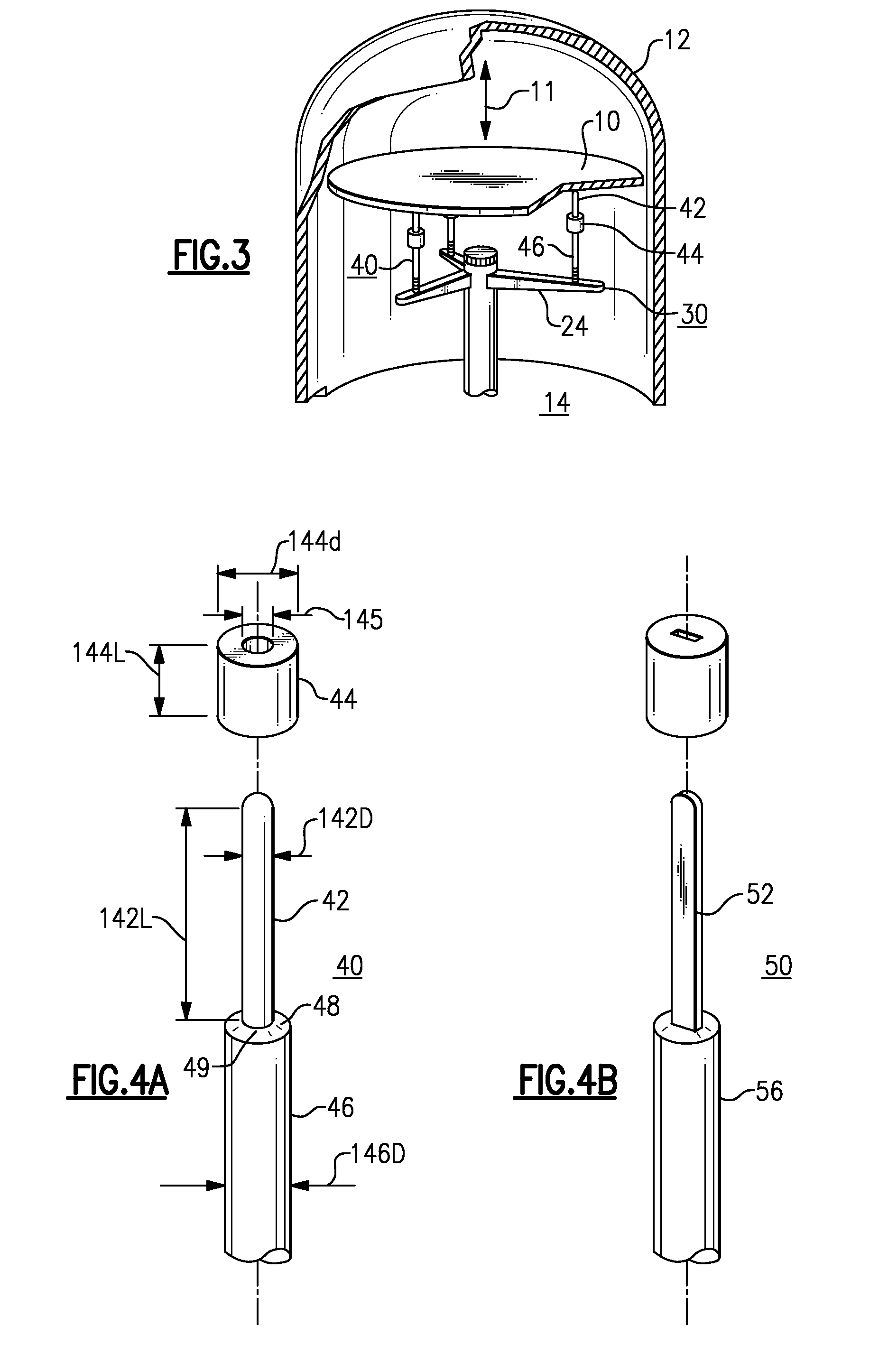Method and structure to control thermal gradients in semiconductor wafers during rapid thermal processing
a technology of thermal processing and semiconductor wafers, applied in the field of system and method for controlling thermal gradients in silicon wafers during thermal processing, can solve the problems of inability to maintain uniform temperature distribution, inability to accept wafer damage, and catastrophic breaking of wafers
- Summary
- Abstract
- Description
- Claims
- Application Information
AI Technical Summary
Benefits of technology
Problems solved by technology
Method used
Image
Examples
examples
[0035]Examples shown in this section are predominantly obtained from model results. They show the agreement between the model prediction and the expectation flowing from the theory presented and description of the invention. However, actual wafer data is included in FIG. 2 for the purpose of validating the accuracy of the model and also calibrating the model against the unknown initial pin temperature.
[0036]In Table 1 and FIG. 2 is shown the effect of initial pin temperature. This parameter will effect the local temperature distribution in the wafer as the wafer is supported by the pin and heated. However, this parameter is also difficult to measure directly. By comparing model expectation as a function of initial pin temperature against actual wafer data, it is possible to obtain an engineering estimate of the initial pin temperature by selecting the condition which most closely matches actual experience. This is done in FIG. 2. It can also been seen from FIG. 2 that the relative b...
PUM
 Login to View More
Login to View More Abstract
Description
Claims
Application Information
 Login to View More
Login to View More - R&D
- Intellectual Property
- Life Sciences
- Materials
- Tech Scout
- Unparalleled Data Quality
- Higher Quality Content
- 60% Fewer Hallucinations
Browse by: Latest US Patents, China's latest patents, Technical Efficacy Thesaurus, Application Domain, Technology Topic, Popular Technical Reports.
© 2025 PatSnap. All rights reserved.Legal|Privacy policy|Modern Slavery Act Transparency Statement|Sitemap|About US| Contact US: help@patsnap.com



